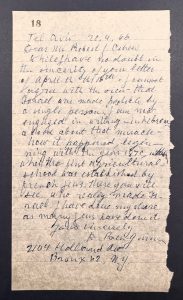Are these kids the worst archers you have ever seen? Based on where their hands are, it is not obvious how the arrows will fly (which is probably a good thing, since most of them are facing each other).
This 1910 postcard printed by the Hebrew Publishing Company of New York depicts the holiday of Lag ba-Omer in Petah Tikvah, Israel. Lag ba-Omer is a minor Jewish holiday that starts this year at sundown on May 25.
The reason for the holiday is unclear. Some say it is the day that a plague that killed thousands of Rabbi Akiva’s students ended. Others say it is the day that Simeon Bar Yochai (to whom tradition attributes the Zohar, the key work of the Kabbalah) died.
It is a custom for children to play with bows and arrows on Lag ba-Omer. The reason for this is also unclear. Some say it is because no rainbow appeared during the life of Bar Yochai. In Hebrew the word keshet means both “rainbow” and “bow”.
The rainbow symbolizes the promise God made after the flood during the time of Noah that the world would never be destroyed. Bar Yochai’s merit was so powerful that it provided protection for all and so no rainbow was needed during his lifetime.
Petah Tikvah (literally the “Gateway to Hope”), which is depicted behind all the bow and arrow fun in this postcard, is about ten kilometres east of Tel Aviv and was founded in 1878. In the 2018 Tony-award winning musical The Band’s Visit, a group of Egyptian musicians were heading to Petah Tikvah when they arrived in the remote, but similar-sounding town of Bet Hatikvah.
Ronelle Grier in her review of the musical in the Detroit Jewish News said: “In a world of growing divisiveness, aggression, intolerance and fear, The Band’s Visit reminds us that kindness, tolerance and meaningful connections are found in unexpected places. We only have to pay attention.”
In the context of how we are feeling these days, this comment hits the bullseye.







